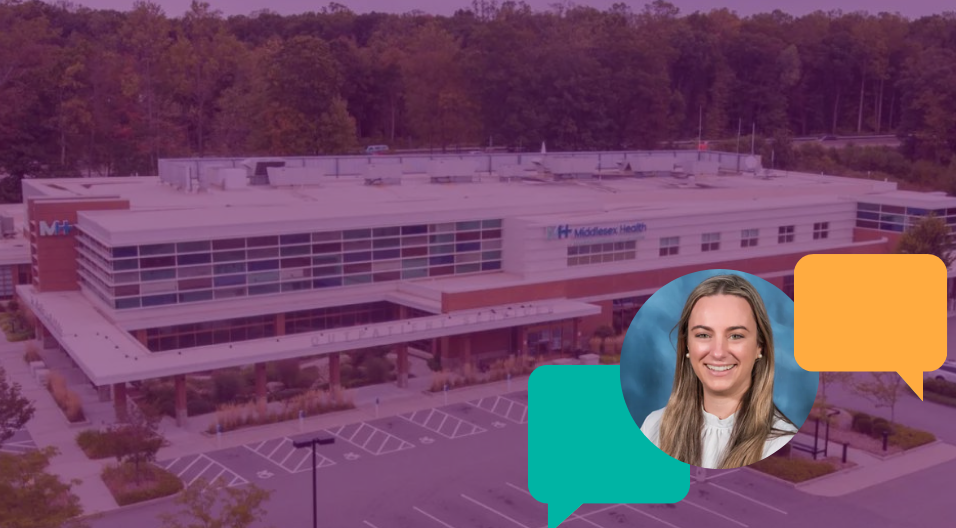The term “digital front door” seems to be everywhere in healthcare these days. But what is it? According to PatientEngagementHIT, the digital front door refers to any virtual means by which a patient interacts with their healthcare provider. It is the technology patients use to communicate with a healthcare organization, before setting foot in the clinical setting through when they return home after treatment. These healthcare services can include, but are not limited to, online appointment scheduling and rescheduling, online provider searches, patient intake technologies, virtual waiting rooms, telehealth visits and digital billing.
In short, the digital front door is meant to support patients across virtual and in-person care in an ongoing way. And, just as importantly, these tools reduce the need for repetitive, manual work and create time savings for providers during a period of widespread staffing shortages.
Let’s take a closer look.
How Does the Digital Front Door Support Both Staff and Patients?
With staffing shortages showing no signs of slowing, many current patient engagement strategies are in need of an upgrade. After two and half years of COVID-19, there are fewer staff members doing robotic work that doesn’t scale – 1 in 5 healthcare workers have left the profession since the pandemic began. Providing remaining staff with digital tools allows them to do more with less and deliver personalized care. What’s more, patients want to be able to proactively and seamlessly participate in their own care while also saving time across the patient journey.
Digital front doors, such as unified pre-care solutions utilizing chatbot technology make it easier for:
-
Patients to schedule appointments.
Today’s patients are accustomed to a digital experience. Engaging them through multi-modality scheduling—voice, text, email and conversational engagement tools—allows staff and patients to book and rebook appointments more efficiently.
-
Patients and staff to prepare for visits.
From filling out paperwork to remembering specific instructions for a visit, preparing for an appointment can be complicated. Sending patients information on what to expect from their visit – whether it’s safety instructions, clinical preparation reminders or education content – and collecting any and all information from the virtually saves time once they arrive and improves operational efficiency.
-
Reducing missed appointments.
Missed appointments can have damaging financial impacts on health systems’ bottom lines. By leveraging multiple patient interaction channels such as automated voice, text, email and conversational chatbots to send multiple reminders in various languages keeps patients coming through the physical doors.
-
Ensuring integration with existing health systems.
As tech stacks have exploded in recent years, this has limited health systems ability to scale and resulted in a disjointed patient experience. With a unified patient engagement solution, ensure integration and communication with health systems’ EMRs.
-
Providing actionable insights.
Without data and visibility into patient engagement, it is challenging to measure success, let alone identify areas for improvement. Using digital solutions technology, track the numbers of patients reached, as well as via what method, and the times of day that work best. These actionable insights help clarify how much time staff spends reaching out to patients and how much of it can be automated to allow them to focus on higher priority tasks.
How Does the Digital Front Door Address Financial, Clinical and Operational Challenges?
Implementing a digital front door strategy is critical towards addressing current market problems and empowering patients throughout their healthcare journey. Patients, who are also consumers, aren’t happy — 28% switched providers because of a poor digital health experience. Moreover, the traditional waiting room model is becoming a thing of the past— 74% of patients surveyed rated the waiting room experience “Fair” or “Poor.”
With digital front door solutions, health systems will be better positioned to support their patients and improve financially, clinically and operationally by:
-
Offering patients modern conveniences including self-scheduling.
When patients have the ability to choose the time and place of their next appointment and make changes as needed – and can complete data intake and other tasks in advance to save time – fewer patients miss appointments or go elsewhere for care. This, in turn, reduces sizable losses in revenue as well as the number of less-engaged patients who tend to need more expensive care.
-
Engaging patients with conversational chatbots that convey pre-care prep and patient education.
Chatbots that assist patients with completing administrative tasks such as self-scheduling and data intake lead to better clinical outcomes. They also directly address current staffing issues as well as the problem of manual data inputs, which are both costly and inefficient.
-
Scaling patient communication as the need evolves.
A flexible, multi-purpose digital front door solution adds automation to workflows and creates efficiencies and time savings for all staff members. This supports healthcare systems by addressing IT complexity created by multiple point solutions, often consisting of technology that lacks scalability, leading to inefficient workflows that burden frontline and IT staff.
Conclusion
As providers seek to address their loss in patient volume, recoup revenue streams, and improve the patient experience, consumeristic trends cannot be ignored. Allowing patients to easily engage with their healthcare provider by leveraging digital front door solutions has a number of notable benefits, not least increasing their loyalty by offering the type of digital experiences in line with modern day patient expectations and already encountered in other industries. As patients continue to want more convenience and connectedness, the digital front door, with the round-the-clock service capabilities, can ensure a healthcare provider’s door to patient interaction is always open.








